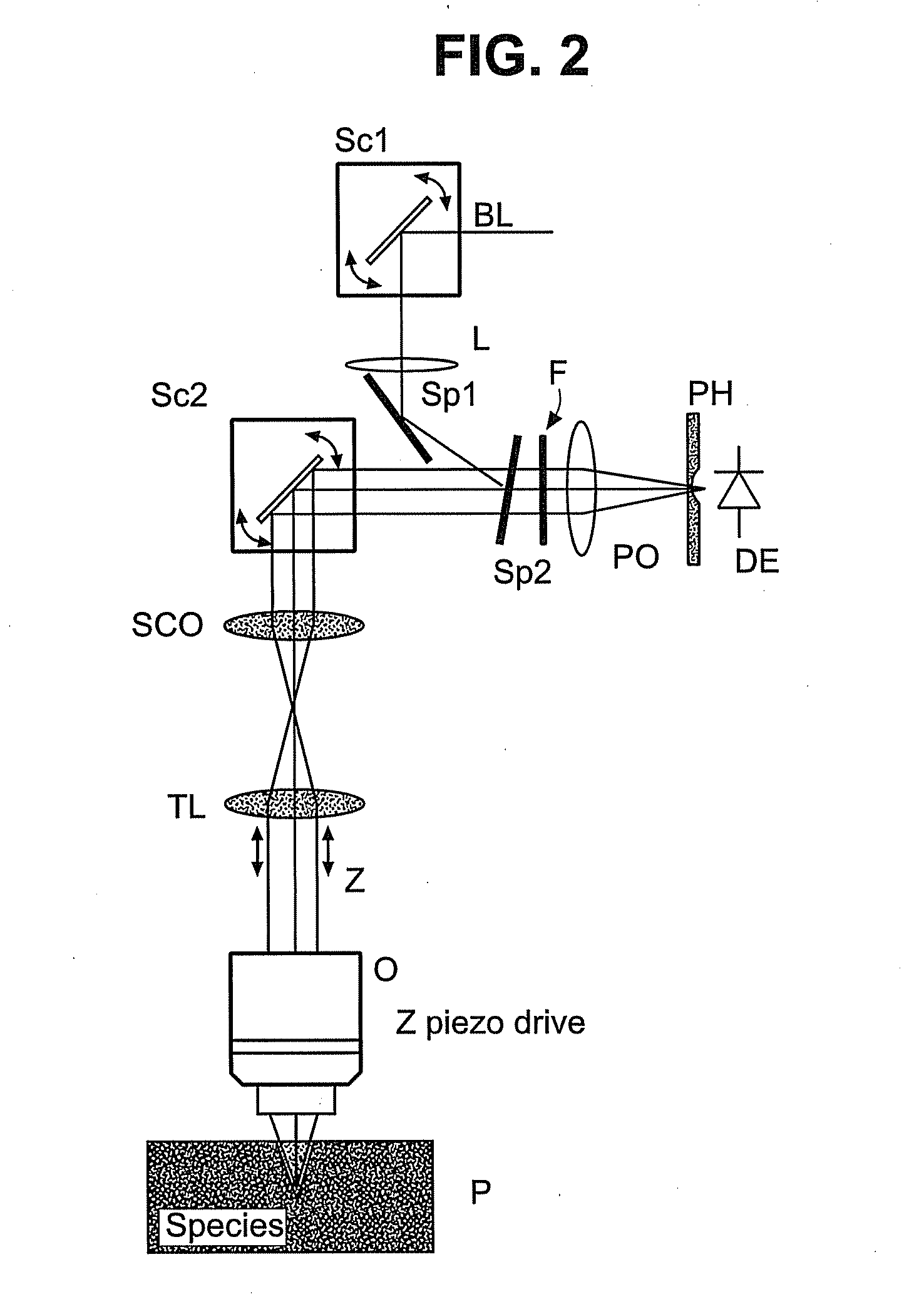Microscopy Method and Microscope With Enhanced Resolution
a microscopy and microscope technology, applied in the field of enhanced resolution microscopy, can solve the problems of unnecessarily exposed radiation to specimens, marked improvement of resolution below the diffraction limit of the microscope, and invariably limited optical resolution of light microscopes, including those of lsms,
- Summary
- Abstract
- Description
- Claims
- Application Information
AI Technical Summary
Benefits of technology
Problems solved by technology
Method used
Image
Examples
Embodiment Construction
[0021]The method comprises the following important steps:
[0022]The illumination (an illumination pattern) for detection is shifted with an accuracy that is above the attainable optical resolution.
[0023]During the shift, several images with the highest attainable optical resolution are captured, which images correspond to a certain shift location of the illumination pattern.
[0024]Based on the detected signals, for example, a fluorescent signal, of the individual images, a high-resolution image is calculated.
[0025]Using nonlinear excitation and the relevant fluorescent markers, the resolution can be further enhanced.
[0026]In FIG. 1a-d), the central idea of the invention is shown with the aid of an illumination spot of a laser scanning microscope.
[0027]It shows how the scan field of a laser scanning microscope (LSM), see also FIG. 2, is moved across the specimen by shifting it with appropriate means (stage motion, second scanner). L1 is the light spot of the LSM that is moved in a defi...
PUM
 Login to View More
Login to View More Abstract
Description
Claims
Application Information
 Login to View More
Login to View More - R&D
- Intellectual Property
- Life Sciences
- Materials
- Tech Scout
- Unparalleled Data Quality
- Higher Quality Content
- 60% Fewer Hallucinations
Browse by: Latest US Patents, China's latest patents, Technical Efficacy Thesaurus, Application Domain, Technology Topic, Popular Technical Reports.
© 2025 PatSnap. All rights reserved.Legal|Privacy policy|Modern Slavery Act Transparency Statement|Sitemap|About US| Contact US: help@patsnap.com



